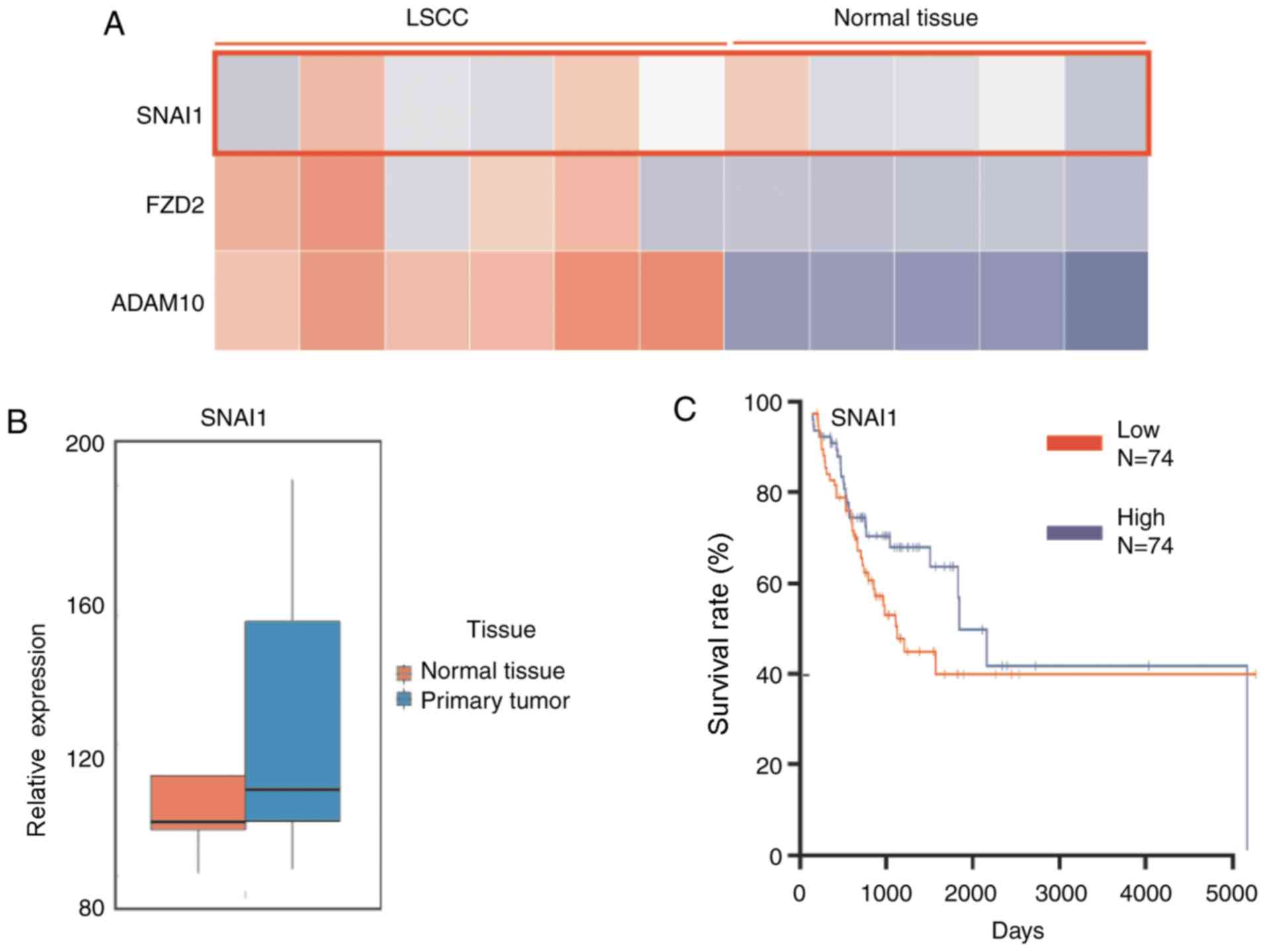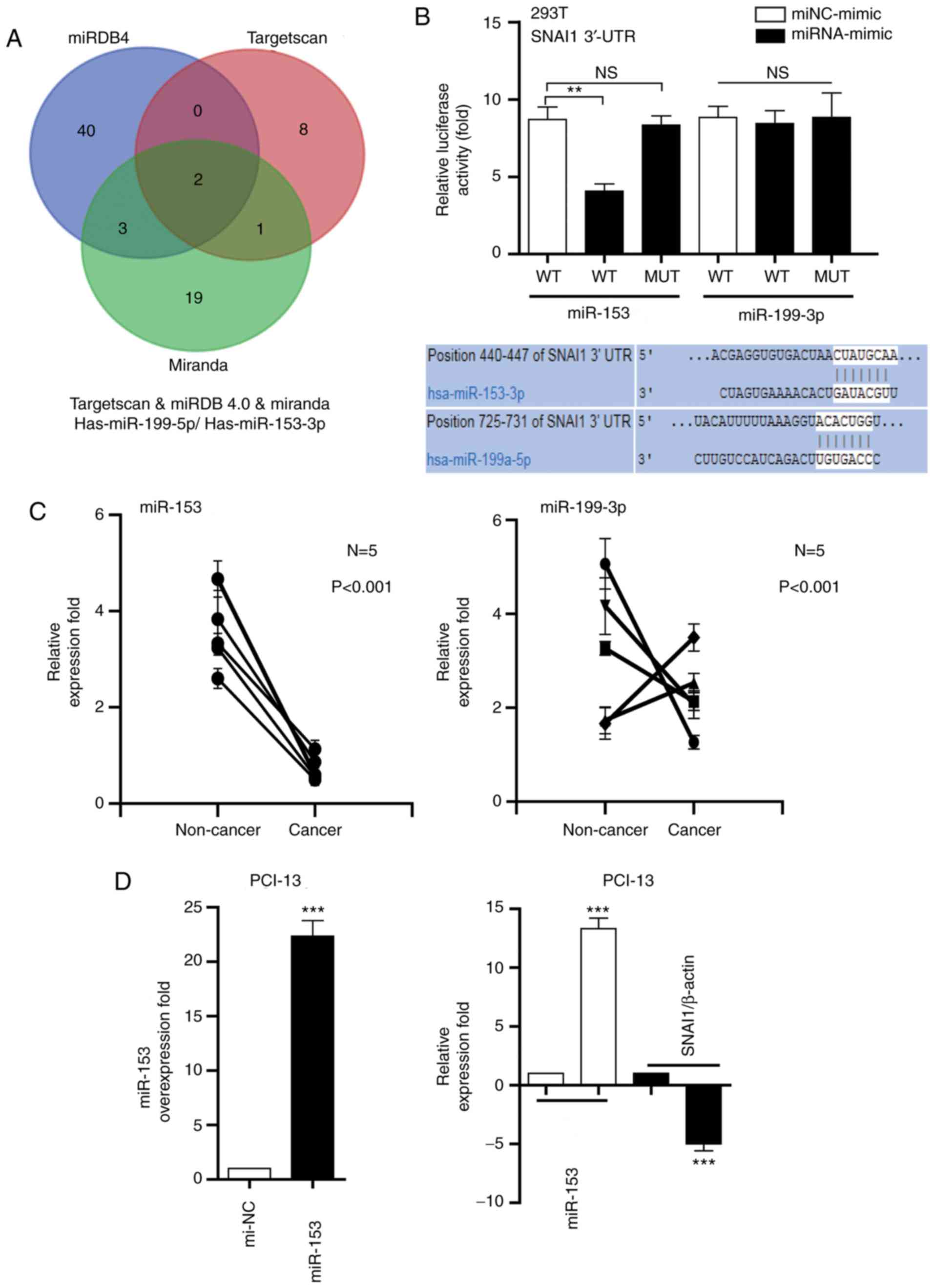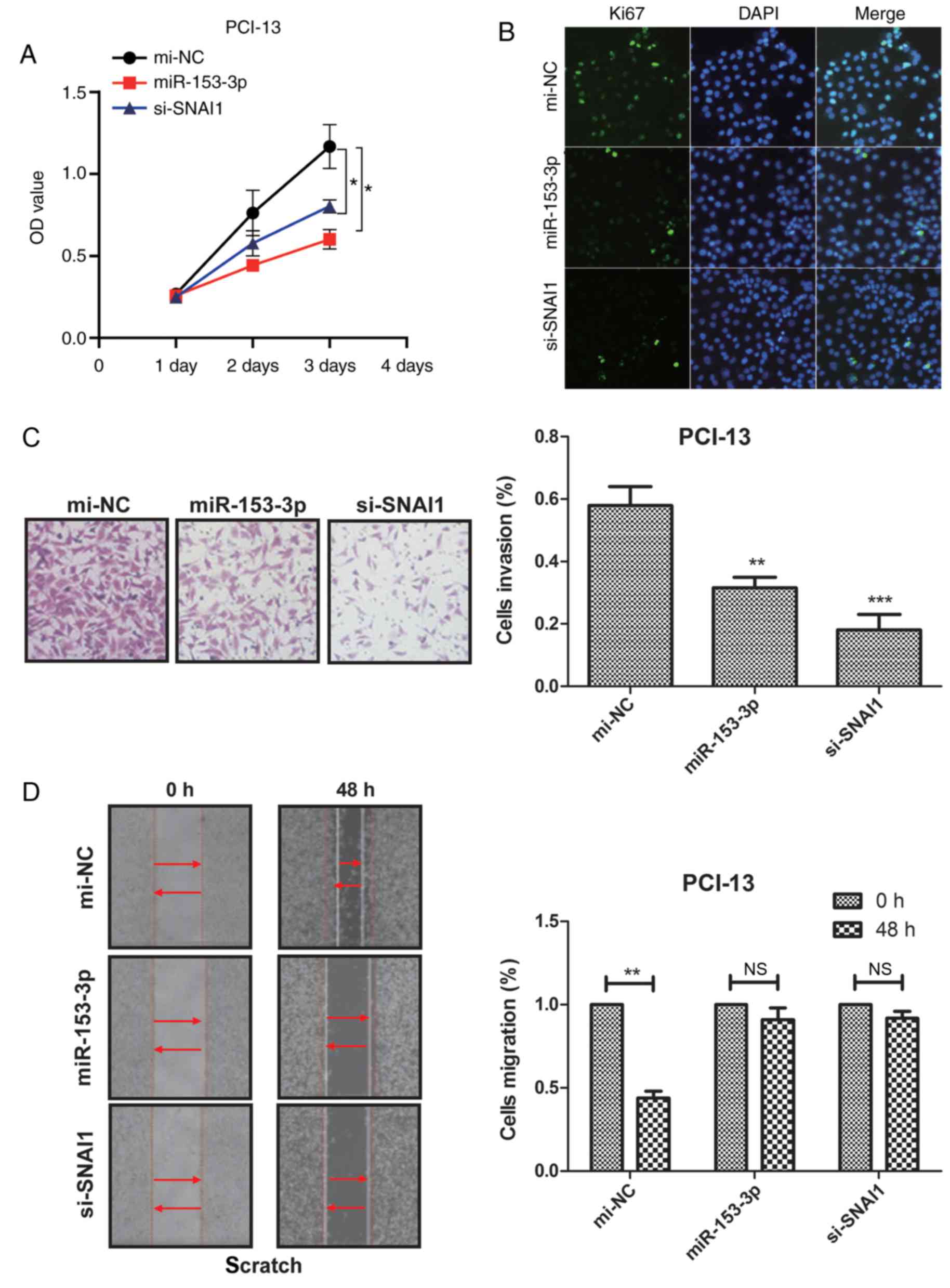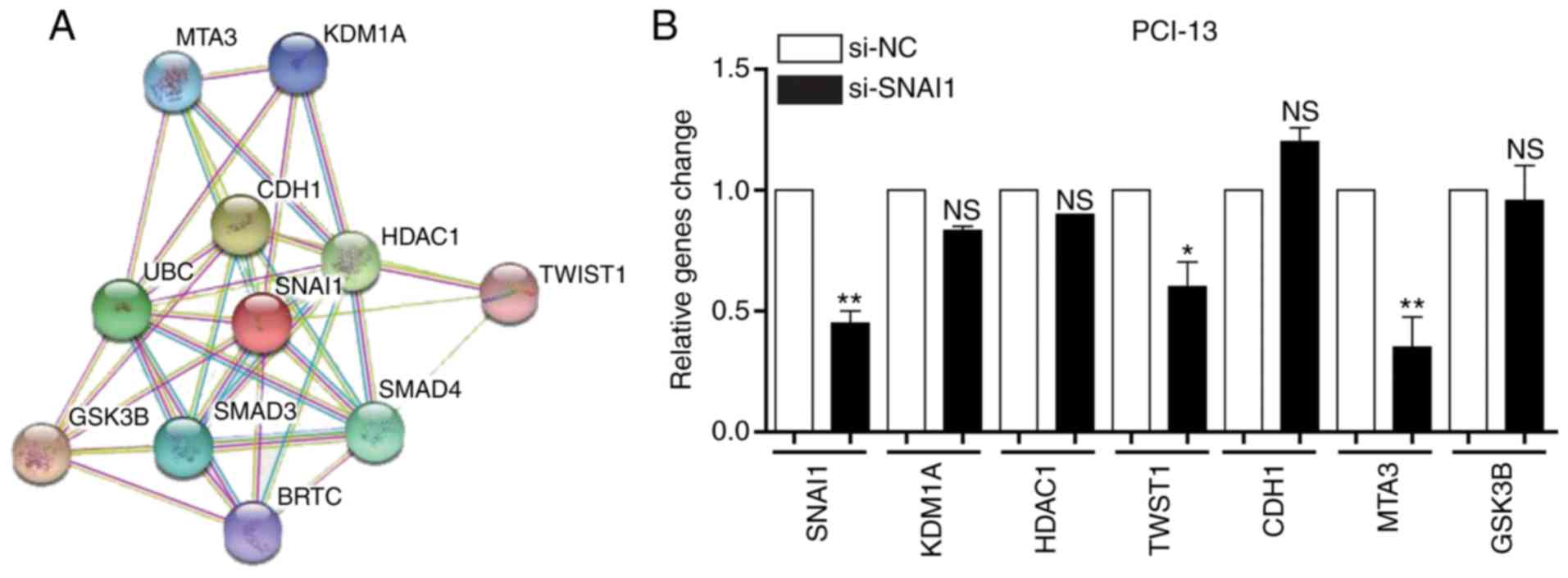|
1
|
Rees L, Birchall M, Bailey M and Thomas S:
A systematic review of case-control studies of human papillomavirus
infection in laryngeal squamous cell carcinoma. Clin Otolaryngol
Allied Sci. 29:301–306. 2004. View Article : Google Scholar : PubMed/NCBI
|
|
2
|
Miura K, Kum Y, Han G and Tsutsui Y:
Radiation-induced laryngeal angiosarcoma after cervical
tuberculosis and squamous cell carcinoma: Case report and review of
the literature. Pathol Int. 53:710–715. 2003. View Article : Google Scholar : PubMed/NCBI
|
|
3
|
Joos B, Joos N, Bumpous J, Burns C, French
CA and Farghaly H: Laryngeal squamous cell carcinoma in a 13
year-old child associated with human papillomaviruses 16 and 18: A
case report and review of the literature. Head Neck Pathol.
3:37–41. 2009. View Article : Google Scholar : PubMed/NCBI
|
|
4
|
Larbcharoensub N, Cheewaruangroj W and
Nitiyanant P: Laryngeal sarcocystosis accompanying laryngeal
squamous cell carcinoma: Case report and literature review.
Southeast Asian J Trop Med Public Health. 42:1072–1076.
2011.PubMed/NCBI
|
|
5
|
Si-Mohamed A, Badoual C, Hans S, Péré H,
Tartour E and Brasnu D: An unusual human papillomavirus type 82
detection in laryngeal squamous cell carcinoma: Case report and
review of literature. J Clin Virol. 54:190–193. 2012. View Article : Google Scholar : PubMed/NCBI
|
|
6
|
Sipaul F, Birchall M and Corfield A: What
role do mucins have in the development of laryngeal squamous cell
carcinoma? A systematic review. Eur Arch Otorhinolaryngol.
268:1109–1117. 2011. View Article : Google Scholar : PubMed/NCBI
|
|
7
|
Furusaka T, Matsuda A, Tanaka A, Matsuda H
and Ikeda M: Superselective intra-arterial chemoradiation therapy
for functional laryngeal preservation in advanced squamous cell
carcinoma of the glottic larynx. Acta Otolaryngol. 133:633–640.
2013. View Article : Google Scholar : PubMed/NCBI
|
|
8
|
Xian JM, Zhou GY, Liang CY and Liu SX:
Study on interference therapy induced by epidermal growth factor
receptor-antisense cDNA in signal transduction of laryngeal
squamous cell carcinoma. Hua Xi Kou Qiang Yi Xue Za Zhi.
25:540–543. 5472007.(In Chinese). PubMed/NCBI
|
|
9
|
Louw L and Claassen J: Rationale for
adjuvant fatty acid therapy to prevent radiotherapy failure and
tumor recurrence during early laryngeal squamous cell carcinoma.
Prostaglandins Leukot Essent Fatty Acids. 78:21–26. 2008.
View Article : Google Scholar : PubMed/NCBI
|
|
10
|
Butler A, Rigby MH, Scott J, Trites J,
Hart R and Taylor SM: A retrospective review in the management of
T3 laryngeal squamous cell carcinoma: An expanding indication for
transoral laser microsurgery. J Otolaryngol Head Neck Surg.
45:342016. View Article : Google Scholar : PubMed/NCBI
|
|
11
|
Gross BC, Olsen SM, Lewis JE, Kasperbauer
JL, Moore EJ, Olsen KD and Price DL: Level IIB lymph node
metastasis in laryngeal and hypopharyngeal squamous cell carcinoma:
Single-institution case series and review of the literature.
Laryngoscope. 123:3032–3036. 2013. View Article : Google Scholar : PubMed/NCBI
|
|
12
|
Zhang Y, Chen Y, Yu J, Liu G and Huang Z:
Integrated transcriptome analysis reveals miRNA-mRNA crosstalk in
laryngeal squamous cell carcinoma. Genomics. 104:249–256. 2014.
View Article : Google Scholar : PubMed/NCBI
|
|
13
|
Wang F, Song G, Liu M, Li X and Tang H:
miRNA-1 targets fibronectin1 and suppresses the migration and
invasion of the HEp2 laryngeal squamous carcinoma cell line. FEBS
Lett. 585:3263–3269. 2011. View Article : Google Scholar : PubMed/NCBI
|
|
14
|
Wang B, Lv K, Chen W, Zhao J, Luo J, Wu J,
Li Z, Qin H, Wong TS, Yang W, et al: miR-375 and miR-205 Regulate
the Invasion and Migration of Laryngeal Squamous Cell Carcinoma
Synergistically via AKT-Mediated EMT. Biomed Res Int.
2016:96527892016. View Article : Google Scholar : PubMed/NCBI
|
|
15
|
Luo J, Wu J, Li Z, Qin H, Wang B, Wong TS,
Yang W, Fu QL and Lei W: miR-375 suppresses IGF1R expression and
contributes to inhibition of cell progression in laryngeal squamous
cell carcinoma. Biomed Res Int. 2014:3745982014. View Article : Google Scholar : PubMed/NCBI
|
|
16
|
Li JZ, Gao W, Lei WB, Zhao J, Chan JY, Wei
WI, Ho WK and Wong TS: MicroRNA 744-3p promotes MMP-9-mediated
metastasis by simultaneously suppressing PDCD4 and PTEN in
laryngeal squamous cell carcinoma. Oncotarget. 7:58218–58233.
2016.PubMed/NCBI
|
|
17
|
Janiszewska J, Szaumkessel M,
Kostrzewska-Poczekaj M, Bednarek K, Paczkowska J, Jackowska J,
Grenman R, Szyfter K, Wierzbicka M, Giefing M and Jarmuz-Szymczak
M: Global miRNA expression profiling identifies miR-1290 as novel
potential oncomiR in laryngeal carcinoma. PloS One.
10:e01449242015. View Article : Google Scholar : PubMed/NCBI
|
|
18
|
Liu JY, Lu JB and Xu Y: MicroRNA-153
inhibits the proliferation and invasion of human laryngeal squamous
cell carcinoma by targeting KLF5. Exp Ther Med. 11:2503–2508. 2016.
View Article : Google Scholar : PubMed/NCBI
|
|
19
|
Ghasemi A, Fallah S and Ansari M: MiR-153
as a tumor suppressor in glioblastoma multiforme is downregulated
by DNA methylation. Clin Lab. 62:573–580. 2016. View Article : Google Scholar : PubMed/NCBI
|
|
20
|
Wu X, Li L, Li Y and Liu Z: MiR-153
promotes breast cancer cell apoptosis by targeting HECTD3. Am J
Cancer Res. 6:1563–1571. 2016.PubMed/NCBI
|
|
21
|
Zou Y, Liu W, Zhang J and Xiang D: miR-153
regulates apoptosis and autophagy of cardiomyocytes by targeting
Mcl-1. Mol Med Rep. 14:1033–1039. 2016. View Article : Google Scholar : PubMed/NCBI
|
|
22
|
Li W, Zhai L, Zhao C and Lv S: MiR-153
inhibits epithelial-mesenchymal transition by targeting metadherin
in human breast cancer. Breast Cancer Res Treat. 150:501–509. 2015.
View Article : Google Scholar : PubMed/NCBI
|
|
23
|
Xia W, Ma X, Li X, Dong H, Yi J, Zeng W
and Yang Z: miR-153 inhibits epithelial-to-mesenchymal transition
in hepatocellular carcinoma by targeting Snail. Oncol Rep.
34:655–662. 2015. View Article : Google Scholar : PubMed/NCBI
|
|
24
|
Wang Z and Liu C: MiR-153 regulates
metastases of gastric cancer through Snail. Tumour Biol. Aug
2–2015.(Epub ahead of print).
|
|
25
|
Yuan Y, Du W, Wang Y, Xu C, Wang J, Zhang
Y, Wang H, Ju J, Zhao L, Wang Z, et al: Suppression of AKT
expression by miR-153 produced anti-tumor activity in lung cancer.
Int J Cancer. 136:1333–1340. 2015. View Article : Google Scholar : PubMed/NCBI
|
|
26
|
Shan N, Shen L, Wang J, He D and Duan C:
MiR-153 inhibits migration and invasion of human non-small-cell
lung cancer by targeting ADAM19. Biochem Biophys Res Commun.
456:385–391. 2015. View Article : Google Scholar : PubMed/NCBI
|
|
27
|
Baek SH, Ko JH, Lee JH, Kim C, Lee H, Nam
D, Lee J, Lee SG, Yang WM, Um JY, et al: Ginkgolic acid inhibits
invasion and migration and TGF-β-induced EMT of lung cancer cells
through PI3K/Akt/mTOR inactivation. J Cell Physiol. 232:346–354.
2017. View Article : Google Scholar : PubMed/NCBI
|
|
28
|
Rumman M, Jung KH, Fang Z, Yan HH, Son MK,
Kim SJ, Kim J, Park JH, Lim JH, Hong S and Hong SS: HS-173, a novel
PI3K inhibitor suppresses EMT and metastasis in pancreatic cancer.
Oncotarget. 7:78029–78047. 2016. View Article : Google Scholar : PubMed/NCBI
|
|
29
|
Lee HH, Lee YJ, Chan P and Lin CY: Use of
PCR-based amplification analysis as a substitute for the southern
blot method for CYP21 deletion detection in congenital adrenal
hyperplasia. Clin Chem. 50:1074–1076. 2004. View Article : Google Scholar : PubMed/NCBI
|
|
30
|
Livak KJ and Schmittgen TD: Analysis of
relative gene expression data using real-time quantitative PCR and
the 2(-Delta Delta C(T)) method. Methods. 25:402–408. 2001.
View Article : Google Scholar : PubMed/NCBI
|
|
31
|
Stanewsky R: Analysis of rhythmic gene
expression in adult Drosophila using the firefly luciferase
reporter gene. Methods Mol Biol. 362:131–142. 2007. View Article : Google Scholar : PubMed/NCBI
|
|
32
|
Xiao YH, Yin MH, Hou L, Luo M and Pei Y:
Asymmetric overlap extension PCR method bypassing intermediate
purification and the amplification of wild-type template in
site-directed mutagenesis. Biotechnol Lett. 29:925–930. 2007.
View Article : Google Scholar : PubMed/NCBI
|
|
33
|
Sticker D, Lechner S, Jungreuthmayer C,
Zanghellini J and Ertl P: Microfluidic migration and wound healing
assay based on mechanically induced injuries of defined and highly
reproducible areas. Anal Chem. 89:2326–2333. 2017. View Article : Google Scholar : PubMed/NCBI
|
|
34
|
Huang G: Erratum: Differential expression
of miR-21 and miR-75 in esophageal carcinoma patients and its
clinical implication. Am J Transl Res. 9:19612017.PubMed/NCBI
|
|
35
|
Shaul YD, Yuan B, Thiru P, Nutter-Upham A,
McCallum S, Lanzkron C, Bell GW and Sabatini DM: MERAV: A tool for
comparing gene expression across human tissues and cell types.
Nucleic Acids Res. 44:D560–D566. 2016. View Article : Google Scholar : PubMed/NCBI
|
|
36
|
McGarey PO Jr, O'Rourke AK, Owen SR,
Shonka DC Jr, Reibel JF, Levine PA and Jameson MJ: Rigid
esophagoscopy for head and neck cancer staging and the incidence of
synchronous esophageal malignant neoplasms. JAMA Otolaryngol Head
Neck Surg. 142:40–45. 2016. View Article : Google Scholar : PubMed/NCBI
|
|
37
|
Cybula M, Wieteska L,
Józefowicz-Korczyńska M, Karbownik MS, Grzelczyk WL and Szemraj J:
New miRNA expression abnormalities in laryngeal squamous cell
carcinoma. Cancer Biomark. 16:559–568. 2016. View Article : Google Scholar : PubMed/NCBI
|
|
38
|
Zhang L, Pickard K, Jenei V, Bullock MD,
Bruce A, Mitter R, Kelly G, Paraskeva C, Strefford J, Primrose J,
et al: miR-153 supports colorectal cancer progression via
pleiotropic effects that enhance invasion and chemotherapeutic
resistance. Cancer Res. 73:6435–6447. 2013. View Article : Google Scholar : PubMed/NCBI
|
|
39
|
Xu Q, Sun Q, Zhang J, Yu J, Chen W and
Zhang Z: Downregulation of miR-153 contributes to
epithelial-mesenchymal transition and tumor metastasis in human
epithelial cancer. Carcinogenesis. 34:539–549. 2013. View Article : Google Scholar : PubMed/NCBI
|
|
40
|
Mühlberg L, Kühnemuth B, Costello E, Shaw
V, Sipos B, Huber M, Griesmann H, Krug S, Schober M, Gress TM and
Michl P: miRNA dynamics in tumor-infiltrating myeloid cells
modulating tumor progression in pancreatic cancer. Oncoimmunology.
5:e11601812016. View Article : Google Scholar : PubMed/NCBI
|
|
41
|
Chakraborty C, Chin KY and Das S:
miRNA-regulated cancer stem cells: Understanding the property and
the role of miRNA in carcinogenesis. Tumour Biol. 37:13039–13048.
2016. View Article : Google Scholar : PubMed/NCBI
|
|
42
|
Liu F, Liu B, Qian J, Wu G, Li J and Ma Z:
miR-153 enhances the therapeutic effect of gemcitabine by targeting
Snail in pancreatic cancer. Acta Biochim Biophys Sin (Shanghai).
49:520–529. 2017. View Article : Google Scholar : PubMed/NCBI
|
|
43
|
Peinado H, Moreno-Bueno G, Hardisson D,
Pérez-Gómez E, Santos V, Mendiola M, de Diego JI, Nistal M,
Quintanilla M, Portillo F and Cano A: Lysyl oxidase-like 2 as a new
poor prognosis marker of squamous cell carcinomas. Cancer Res.
68:4541–4550. 2008. View Article : Google Scholar : PubMed/NCBI
|
|
44
|
Wang S, Han H, Hu Y, Yang W, Lv Y, Wang L,
Zhang L and Ji J: MicroRNA-130a-3p suppresses cell migration and
invasion by inhibition of TBL1XR1-mediated EMT in human gastric
carcinoma. Mol Carcinog. 57:383–392. 2018. View Article : Google Scholar : PubMed/NCBI
|
|
45
|
Yang L, Wang T, Zhang J and Wang X: BTBD7
silencing inhibited epithelial- mesenchymal transition (EMT) via
regulating Slug expression in human salivary adenoid cystic
carcinoma. Cancer Biomark. 20:461–468. 2017. View Article : Google Scholar : PubMed/NCBI
|
|
46
|
Murakami K, Wu Y, Imaizumi T, Aoki Y, Liu
Q, Yan X, Seino H, Yoshizawa T, Morohashi S, Kato Y and Kijima H:
DEC1 promotes hypoxia-induced epithelial-mesenchymal transition
(EMT) in human hepatocellular carcinoma cells. Biomed Res.
38:221–227. 2017. View Article : Google Scholar : PubMed/NCBI
|
|
47
|
Sun C, Han C, Wang P, Jin Y, Sun Y and Qu
L: HOXB9 expression correlates with histological grade and
prognosis in LSCC. Biomed Res Int. 2017:36803052017. View Article : Google Scholar : PubMed/NCBI
|


















